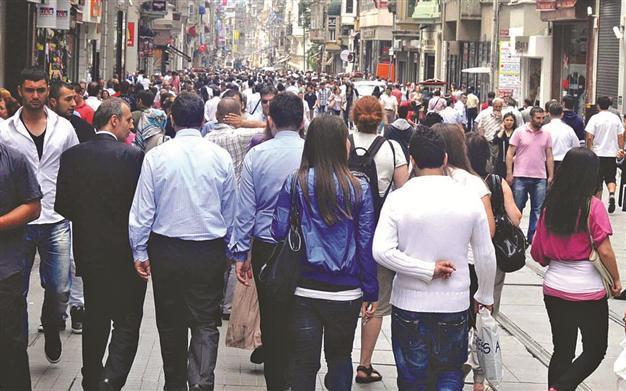Turkey’s real unemployment rate 20 pct when all jobless considered
MUSTAFA SÖNMEZ

The number of people who work fewer than 40 hours a week, but would work more if they could find work hiked to 595,000 in August by some 50 pct increase from the same month in 2012.
The accuracy of an official unemployment rate is open to discussion in almost all countries, not just in Turkey. There is generally some discrepancy between official numbers and real numbers. The official unemployment rate is based on different assumptions and defined in varied ways. A person over 15 years old is not included in the workforce unless s/he applies for a job. For instance, over 11.4 million women are not included in the workforce as they are grouped as “housewives.” Therefore, they are not seen as unemployed. If even one-fourth of them had been included in the main group of the workforce, Turkey would be one of the countries with the highest unemployment rate, leaving Spain, Portugal and South Africa behind. While three-fourths of the male population over 15 years old are included in the workforce, only 31 percent of Turkish women over 15 years old are part of the workforce. There are other issues.The Turkish Statistical Institute (TÜİK) reveals “official unemployment rates” in the middle of each month for the prior two months. The agency announced the rate for August 2013 as
9.8 percent, which is one point higher than the same period of the previous year.
Official unemployment
The number of unemployed people increased to 2.8 million this August from 2.4 million last August. This means around 400,000 people became a part of “officially” jobless people. This rate is one point lower than the EU average and very close to the figures in Hungary, Slovenia and Poland.
The unemployment rates of more than 27-28 percent in Spain and Greece are extremely high,
to be sure.
Here, the main problem is semi-workers. The ILO asks from its member countries to declare their “flexible employment” or “discouraged jobless” rate covering people who are jobless, but do not even bother seeking jobs because they don’t believe they’ll be able to find work, in a separate group from the “official employment” rate. In this vein, people who “believe there is no job post in the region where they live or believe there is no job for themselves or do not know how to seek jobs, but say they are ready to work” are not seen as “officially jobless.”
These people are called the “discouraged ones.” They are actually unemployed, but are tired of seeking jobs with so few prospects. Some 2.1 million people live like that in Turkey, around three-fourths of the official jobless rate. If they are included in the equation, the number of jobless people surpasses 4.9 million in Turkey. There is more.
In addition to official jobless people and uncounted unemployed people, there is another group: “underemployed people” who are “barely working.” The number of people who work fewer than 40 hours a week, but would work more if they could find jobs increased to 595,000 in August from around 400,000 compared to the same month of 2012.
Underemployment
This means the number of people who could find jobs requiring less than 40 hours a week almost doubled in one year. There is also another group: “Temporary workers,” who work temporarily, but seek a permanent job as they cannot afford to live their lives with temporary jobs. The number of all these underemployed people surpassed 1.076 million in August, increasing by 44 percent from the same month in 2012. They should also be counted as real unemployed people.
The number of officially unemployed people, discouraged workers and temporary workers exceeds 6 million in Turkey. This means there are over 6 million real unemployed people, creating an unemployment rate of 20 percent. The official jobless rate is around 10 percent in the EU, the same as Turkey’s official rate. The real rate of unemployment is also over 18-20 percent in the EU as well.
Seasonal job opportunities in agricultural, tourism and construction sectors begin to decrease at the beginning of every August, pushing unemployment rates up in the following months. This year will not be an exception.
The official unemployment rate will be over 10 percent in the September figures, which will be announced soon. Economic conditions, however, do not promise more jobs. Although the Turkish government is trying to create more jobs just before elections at the cost of extra budget expenses, it can’t create more than 80,000-90,000 new positions in the public sector. This figure is so much lower compared to the 3 million officially unemployed people.
Growth is the recipe, but Turkey hasn’t been able to grow at more than 2-3 percent for the last two years at the expense of pushing its current account deficit much higher. Turkey might also attract less foreign capital in 2014, making it even more difficult for employed people to keep their jobs. Higher unemployment, officially or unofficially, appears set to be the biggest nightmare for both Turkey and the EU in the next years.
















